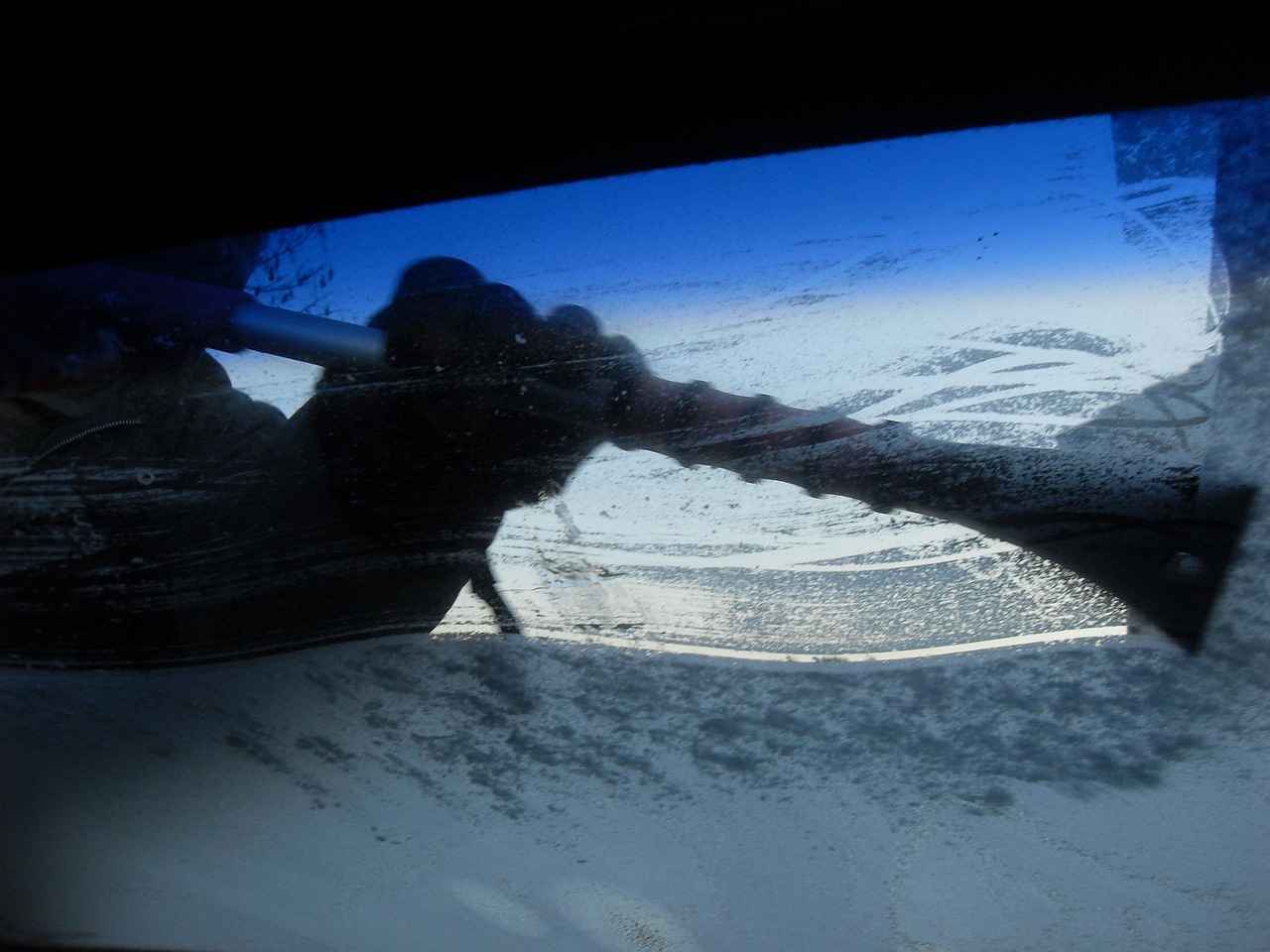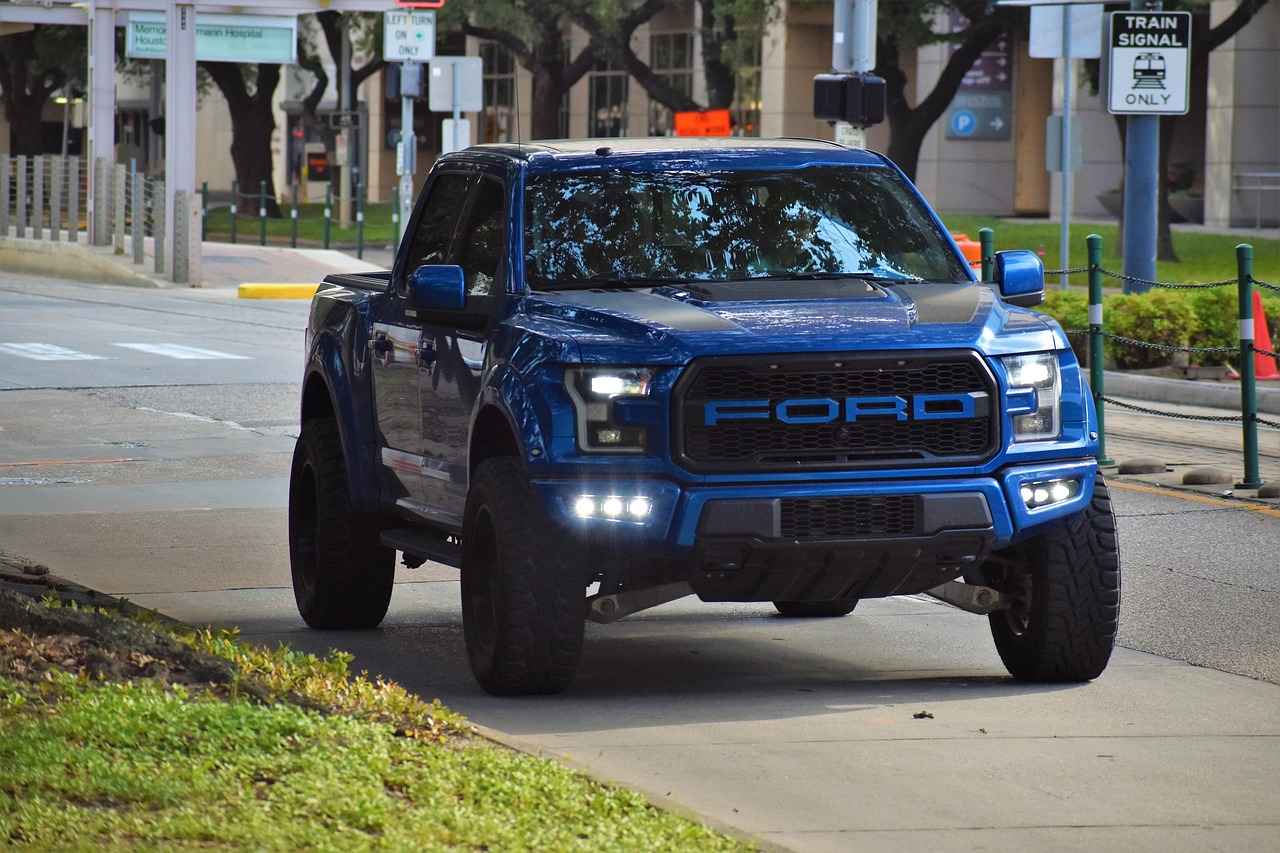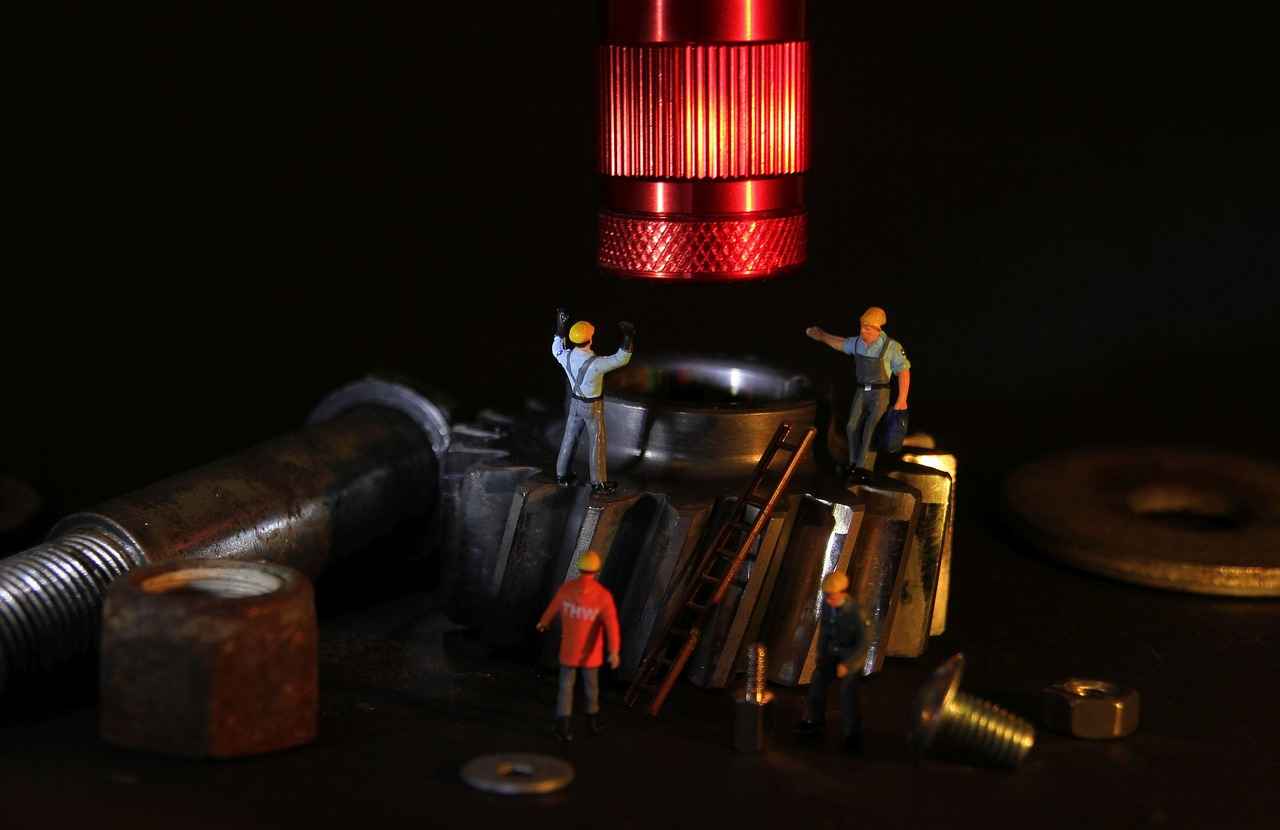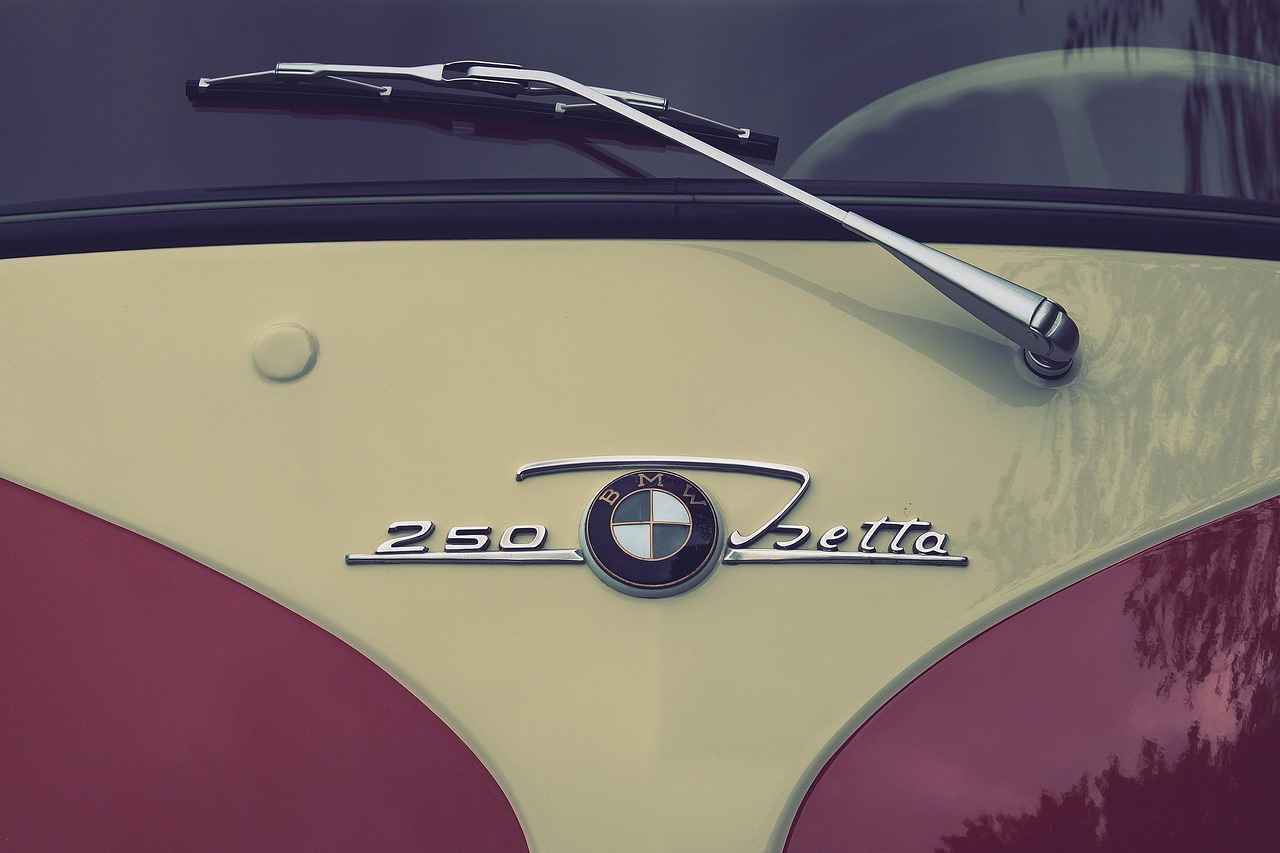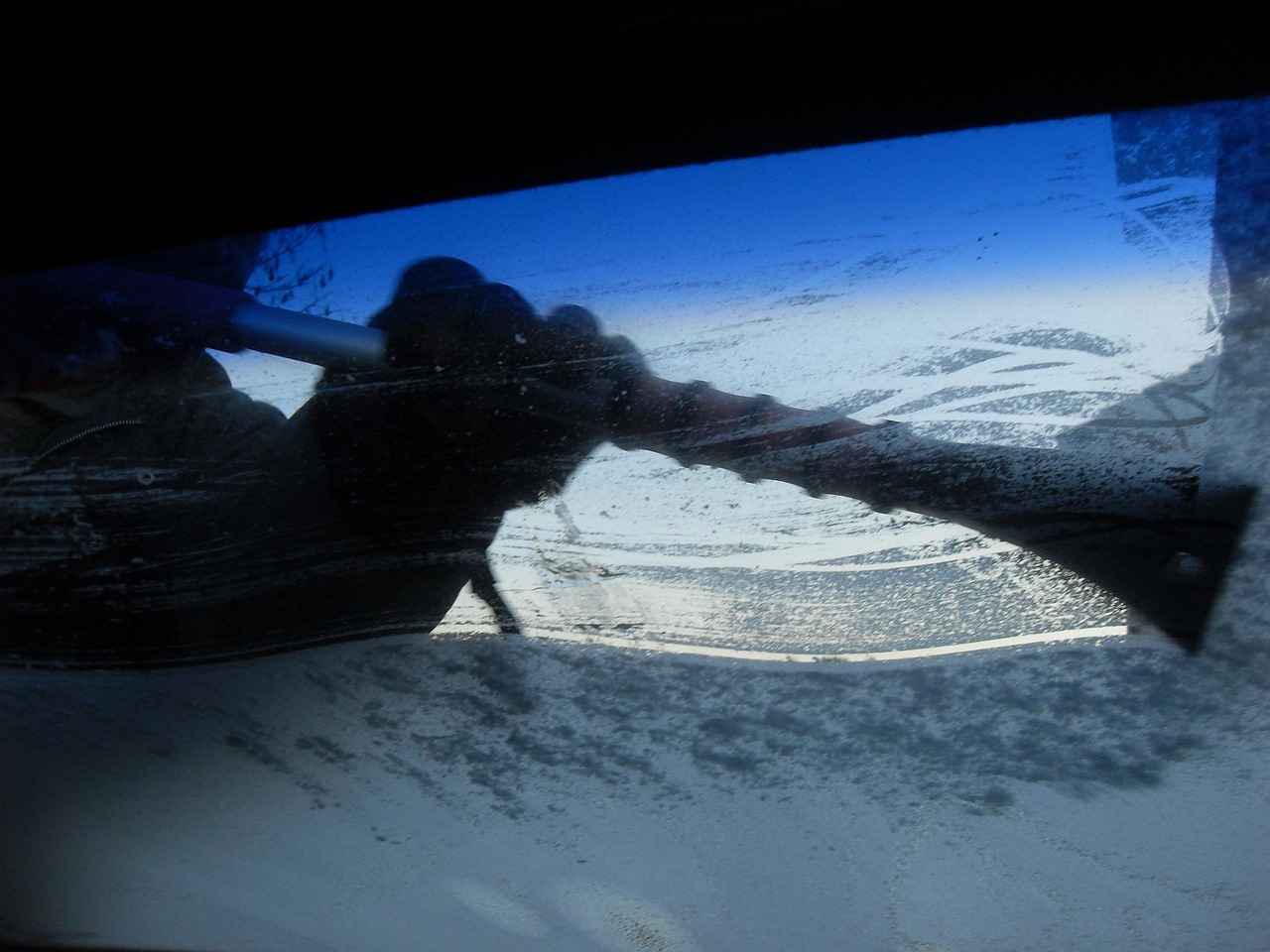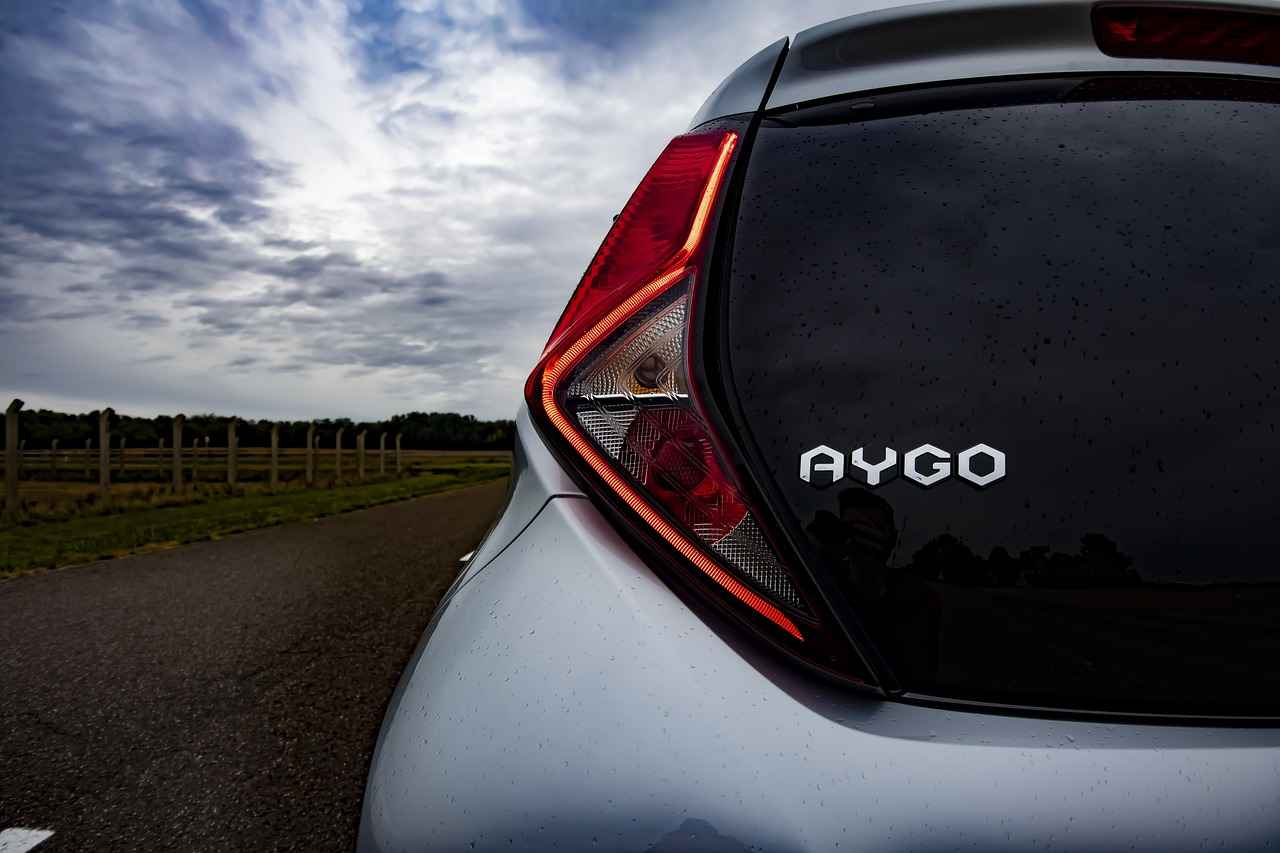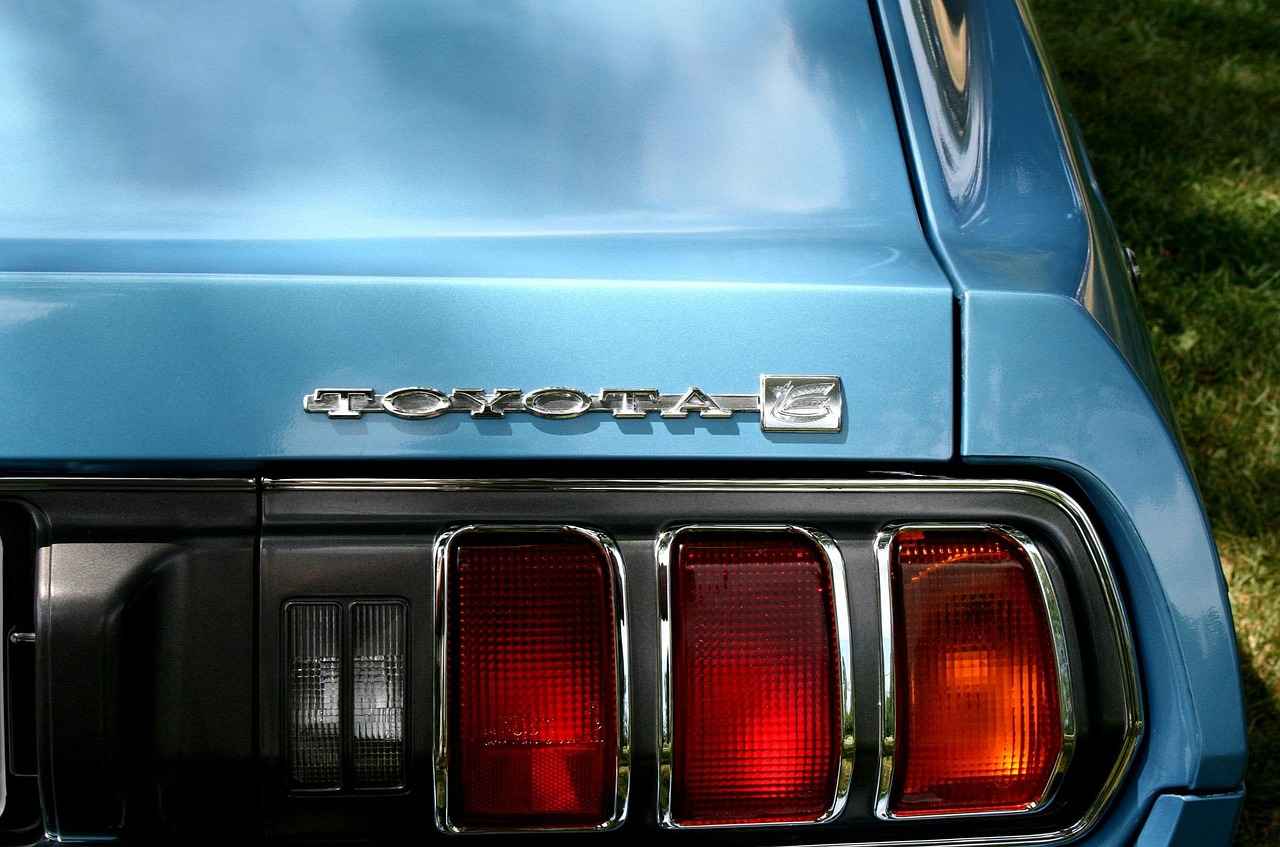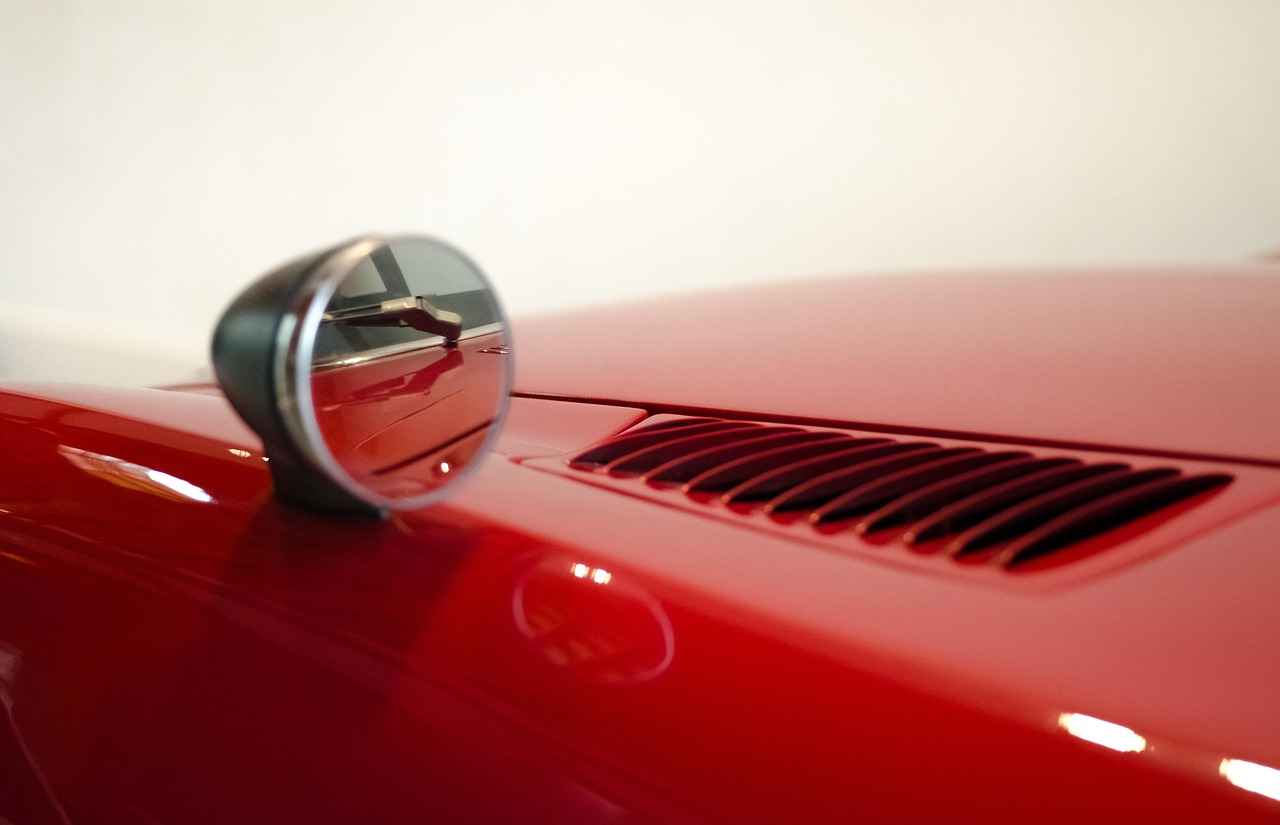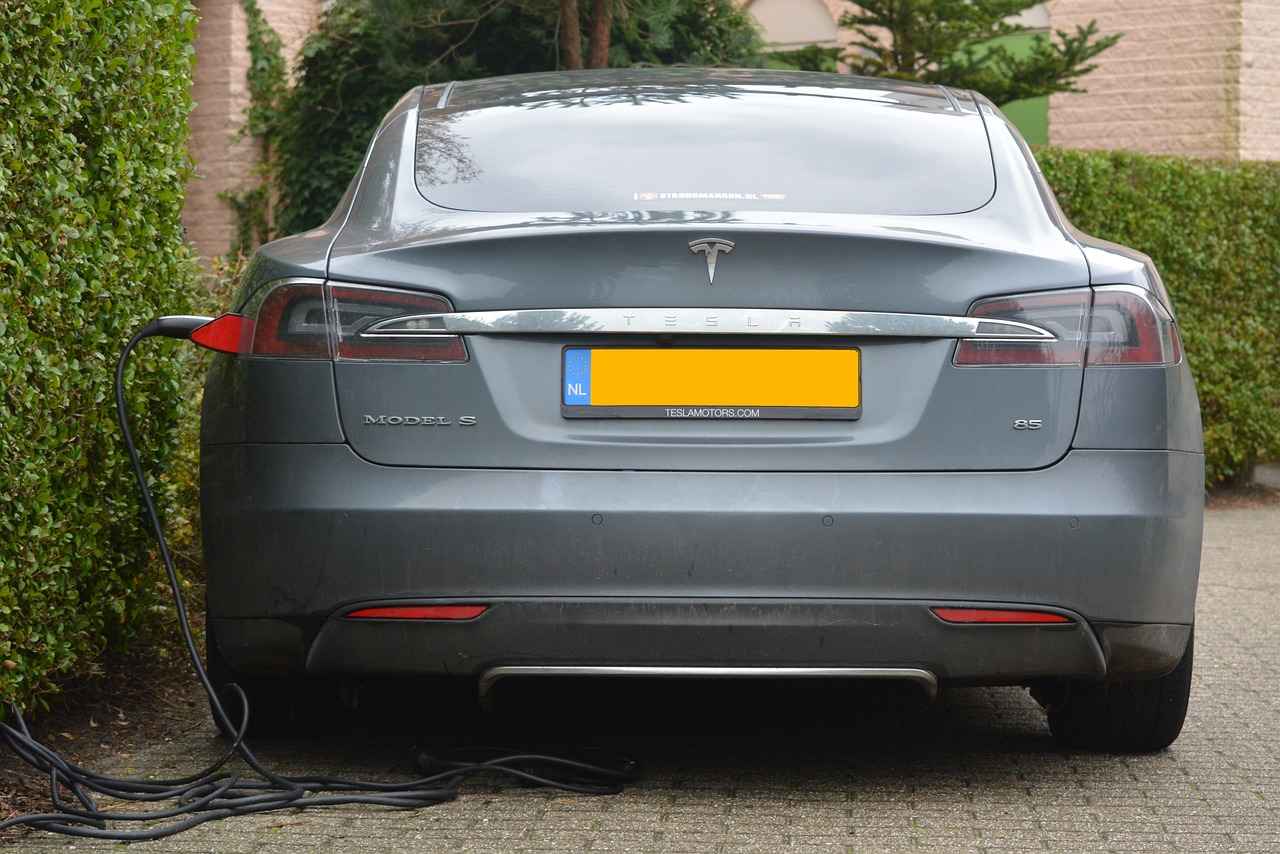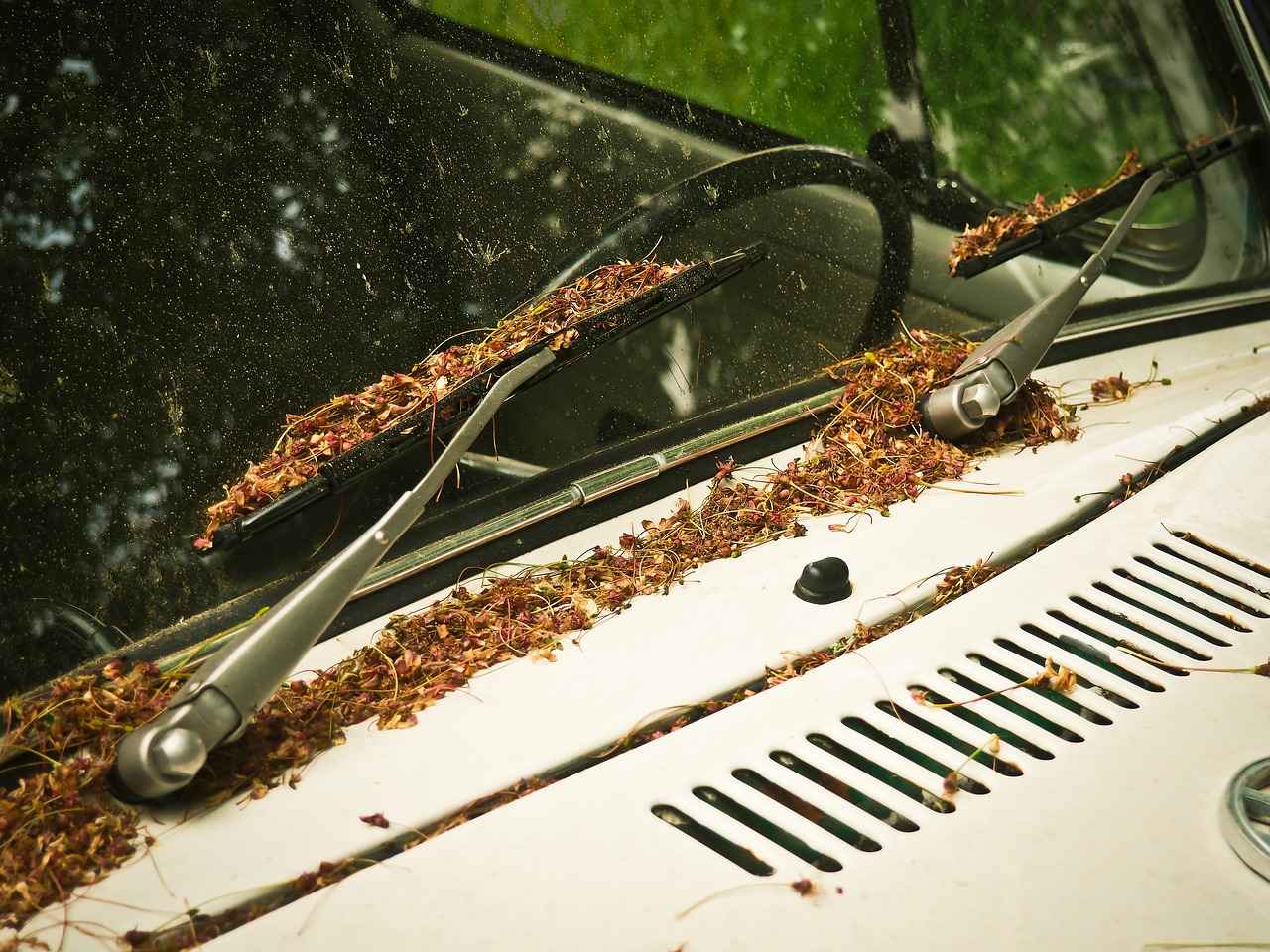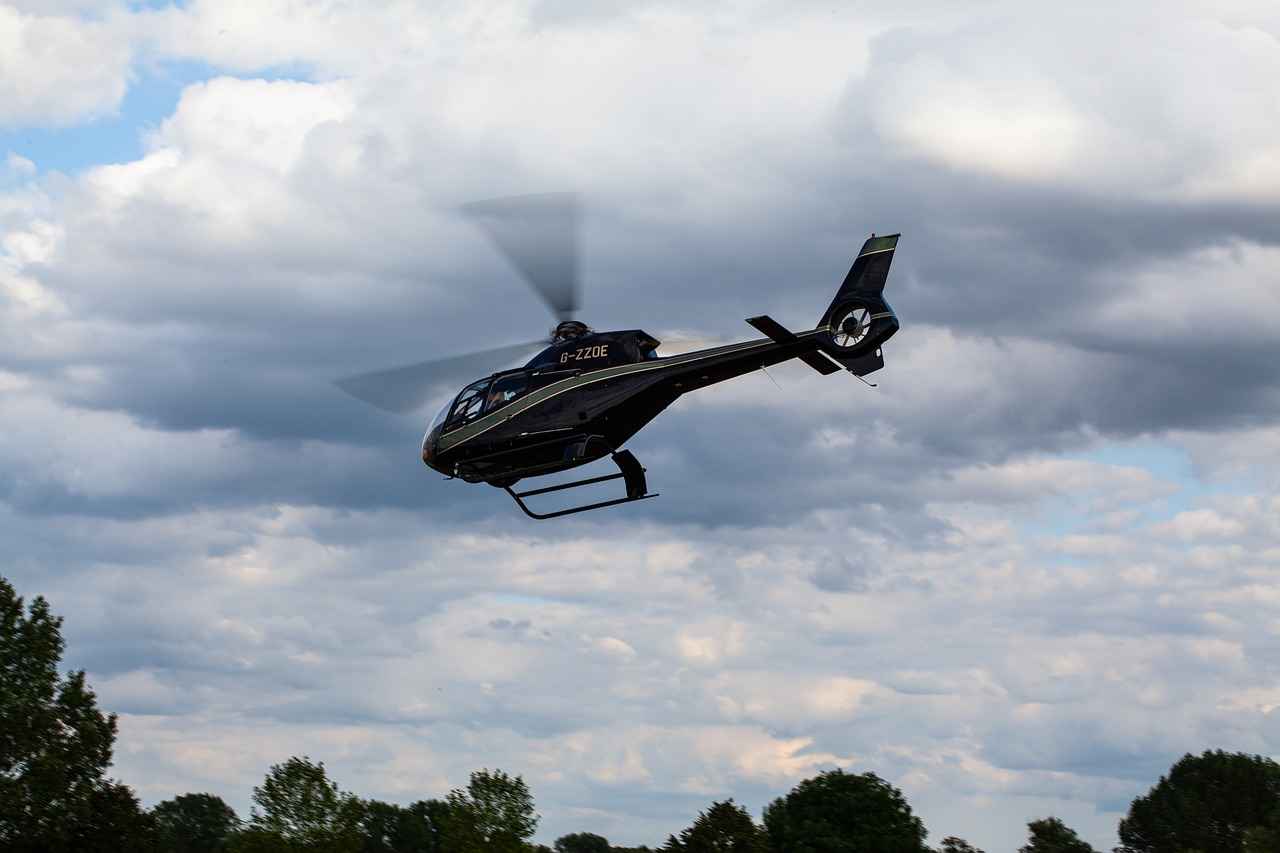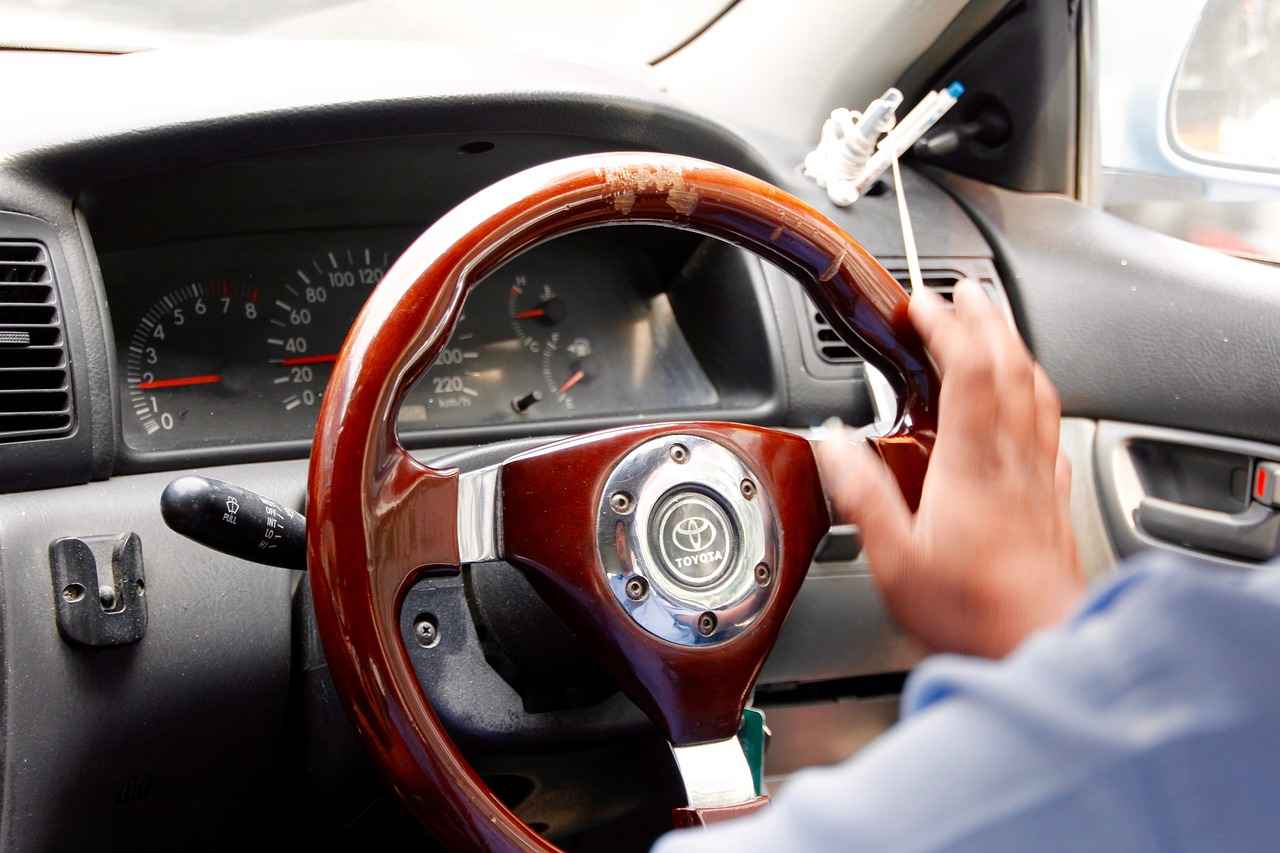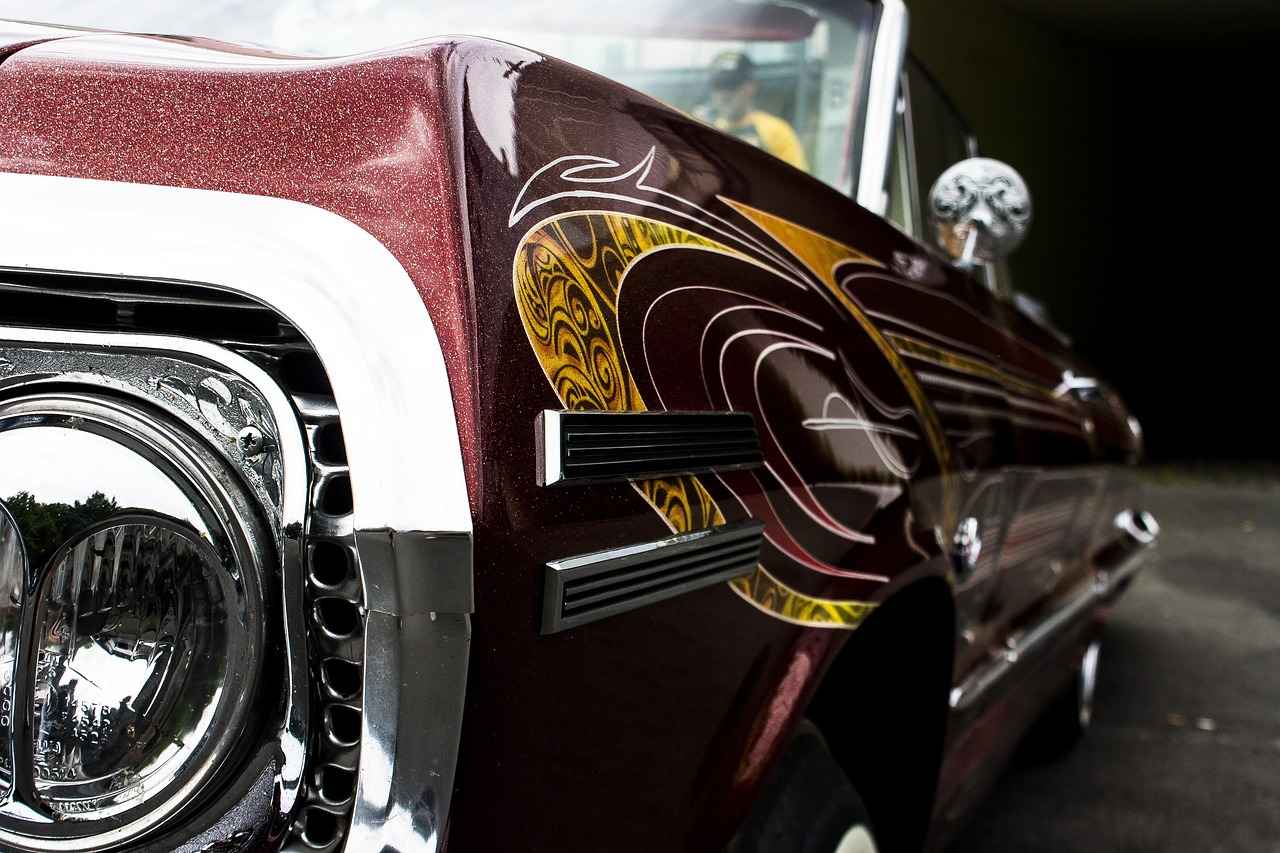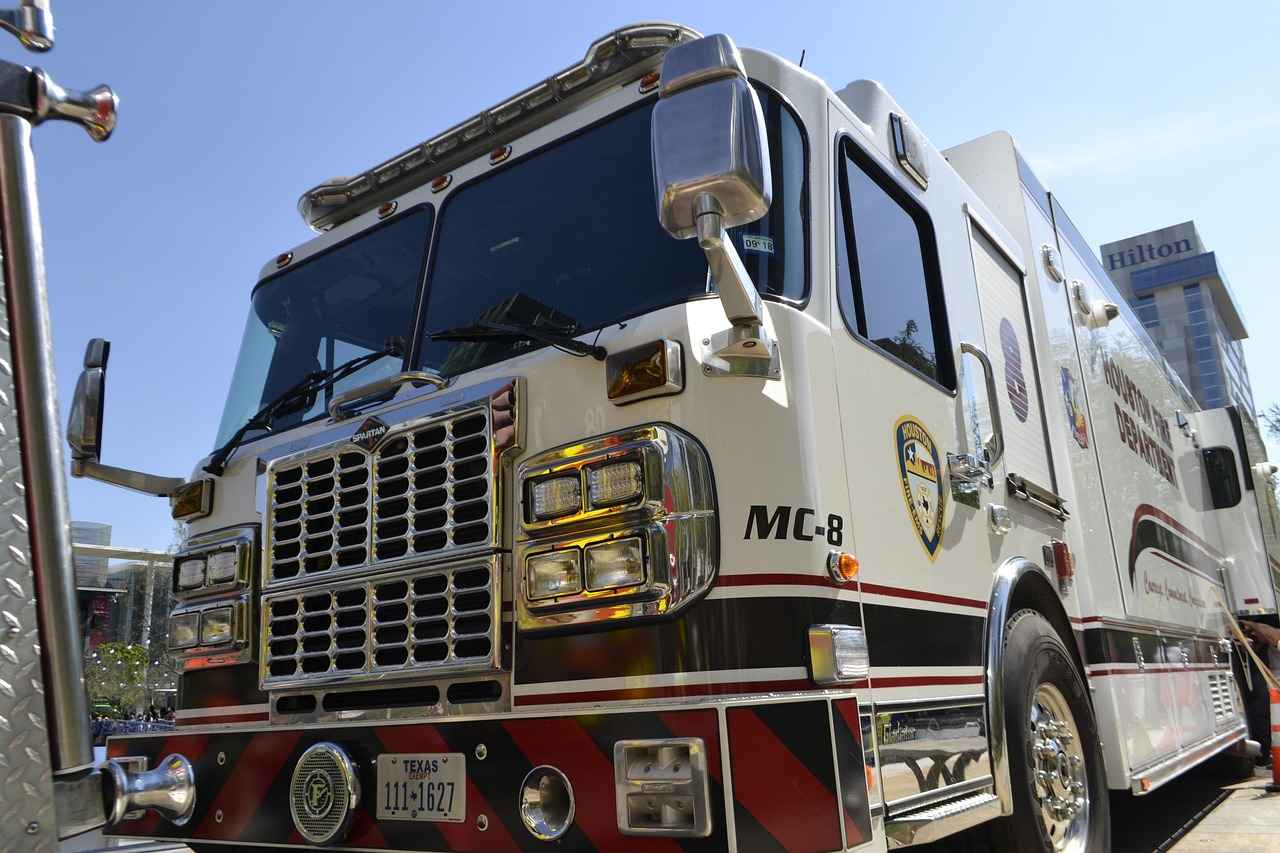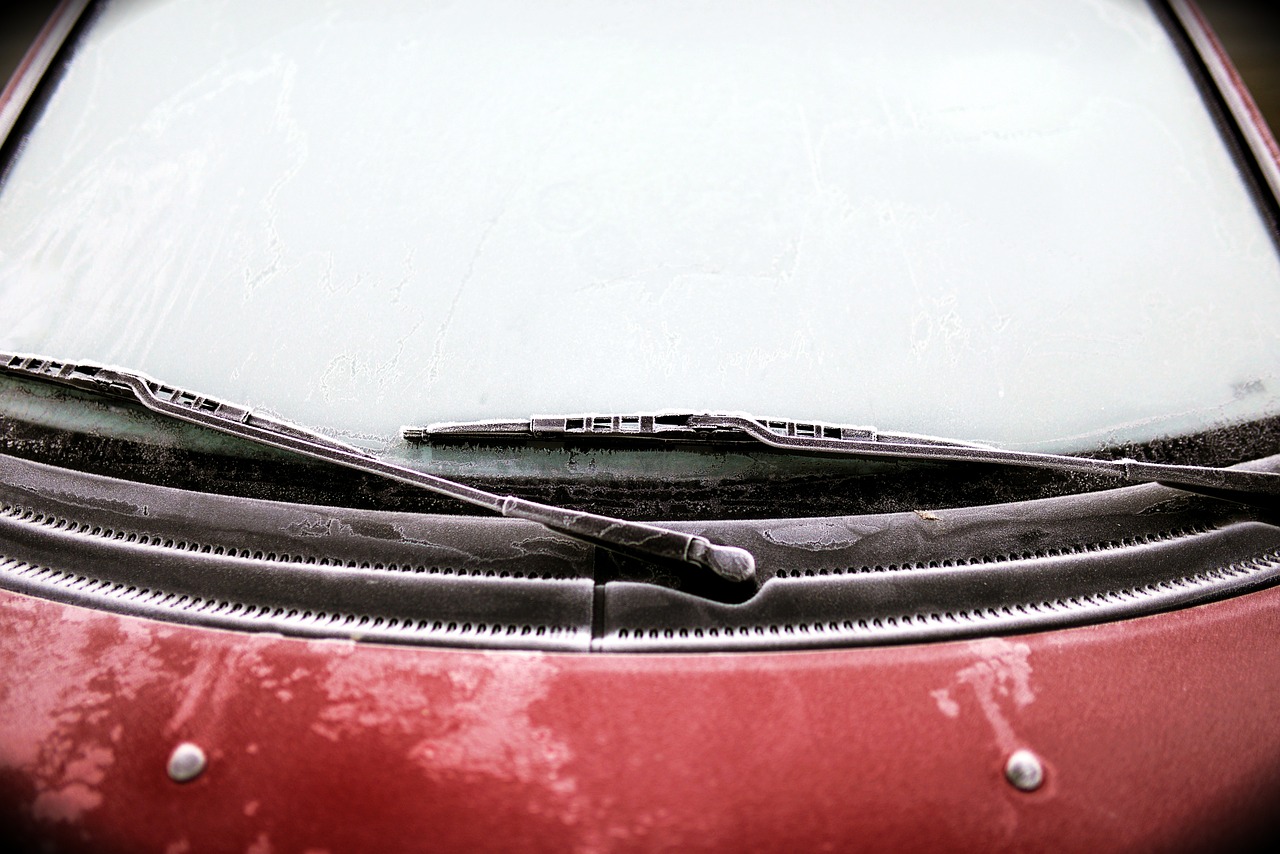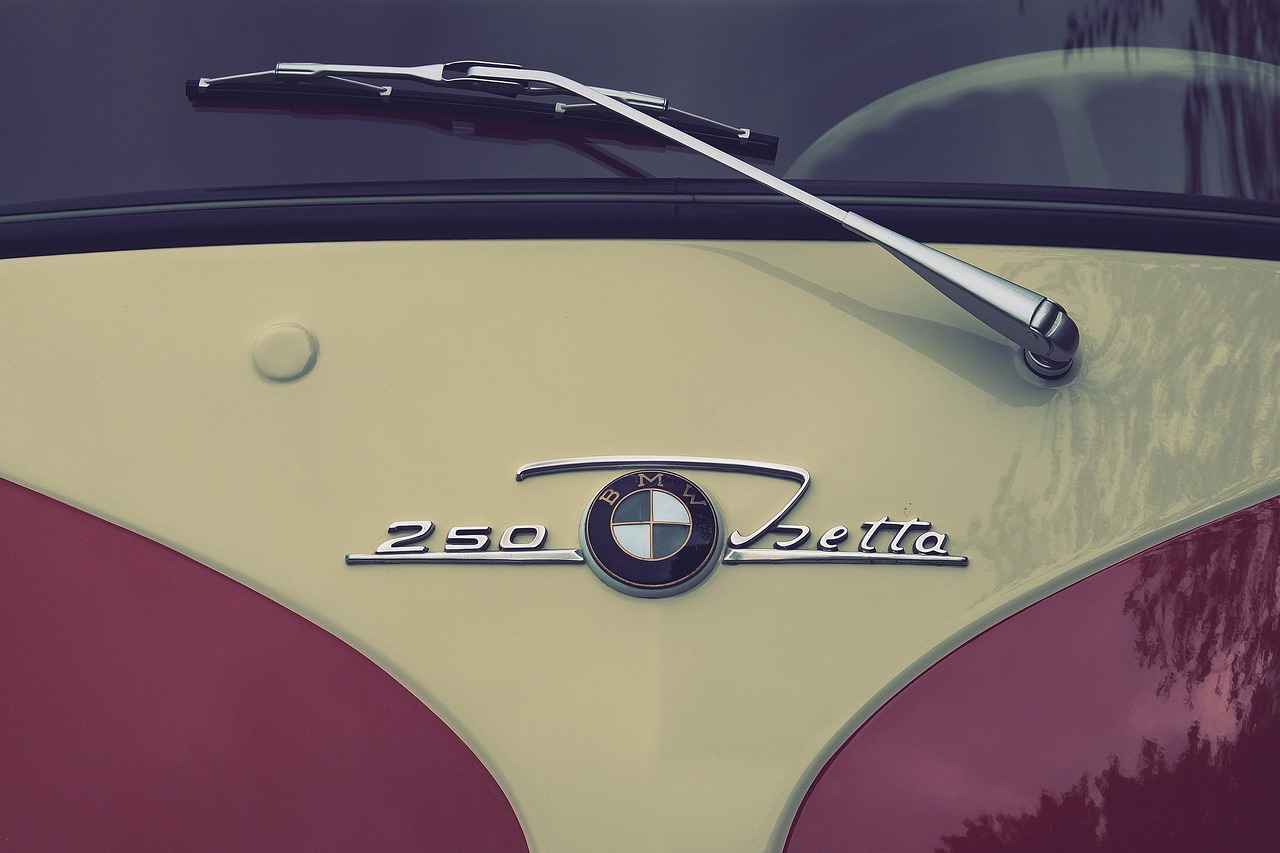This article serves as a comprehensive guide on how to effectively install windshield wipers, ensuring optimal visibility and safety while driving. Windshield wipers play a crucial role in maintaining clear sightlines during rain or snow, making their proper installation essential for all vehicle owners.
Understanding the significance of replacing windshield wipers can help you maintain vehicle safety and visibility during adverse weather conditions. Regular maintenance is essential for effective driving. Worn-out wipers can lead to streaks and smudges, impairing your ability to see clearly.
Before starting the installation process, gather the necessary tools to ensure a smooth experience. Having the right equipment on hand can save time and effort. The basic tools required include:
- Flathead screwdriver
- Socket wrench (if necessary)
Selecting the correct size and type of windshield wipers is crucial for effective performance. Refer to your vehicle’s manual or a parts store guide to find the right match. Ensure that the blades are compatible with your vehicle’s make and model for optimal performance.
Removing old windshield wipers is a straightforward process that requires caution. Proper removal ensures that the new wipers can be installed without any issues. Follow these steps:
- Lift the wiper arm away from the windshield.
- Press the release tab located on the wiper blade.
- Slide the wiper blade off the arm.
Avoid pulling too hard on the wiper arm or blade, as this can cause damage. Additionally, ensure that the arm is secured before attempting to remove the blade. This will help prevent any unnecessary strain on the components.
Installing new windshield wipers is a simple procedure that can be completed in just a few minutes. Following the correct steps will ensure they function effectively. Here’s how to do it:
- Align the new wiper blade with the wiper arm.
- Slide it into place until you hear a click, indicating a secure fit.
After installation, it’s essential to test the wipers to ensure they function correctly. Turn on your vehicle’s wiper system to check for smooth operation and proper contact with the windshield. This step is vital to confirm that the wipers will perform effectively during adverse weather.
To prolong the life of your windshield wipers and ensure optimal performance, consider the following tips:
- Regular Cleaning: Clean the wiper blades with a soft cloth to remove dirt and debris.
- Inspect for Damage: Regularly check for signs of wear and tear, such as cracks or tears in the rubber.
- Replace Periodically: It’s recommended to replace wipers every 6 to 12 months, depending on usage and weather conditions.
By following this guide, you can ensure that your windshield wipers are installed correctly and function optimally, enhancing your driving experience and safety.

Why Is It Important to Replace Windshield Wipers?
Understanding the importance of replacing windshield wipers is crucial for maintaining both safety and visibility while driving. Worn or damaged wipers can significantly impair your ability to see the road, particularly during adverse weather conditions such as rain, snow, or sleet. Regular maintenance of your vehicle’s windshield wipers is not just a matter of convenience; it is essential for effective driving.
Over time, windshield wipers can become ineffective due to various factors, including exposure to UV rays, harsh weather, and general wear and tear. This degradation can lead to streaks on the windshield, reduced visibility, and even potential accidents. Therefore, understanding when and why to replace your wipers is vital for your safety and that of others on the road.
It’s generally recommended to replace windshield wipers every six months to a year, depending on usage and environmental conditions. However, regular inspections can help determine if they need replacing sooner. Look for signs such as:
- Streaking: If your wipers leave streaks on the glass, they may need to be replaced.
- Noise: Squeaking or chattering sounds during operation can indicate worn blades.
- Cracks or Tears: Inspect the rubber for any visible damage.
Neglecting to replace your windshield wipers can lead to several dangerous consequences. Poor visibility due to ineffective wipers can increase the risk of accidents, especially in inclement weather. Additionally, worn wipers can scratch the windshield, leading to costly repairs or replacements. This not only affects your safety but also your vehicle’s overall value.
Regularly replacing your windshield wipers offers numerous benefits:
- Enhanced Visibility: New wipers provide a clear view of the road, reducing the risk of accidents.
- Improved Driving Comfort: Functional wipers contribute to a more pleasant driving experience.
- Cost-Effective: Preventing windshield damage can save you money in the long run.
Selecting the correct windshield wipers for your vehicle is crucial. Refer to your vehicle’s manual or consult with a knowledgeable staff member at auto parts stores. They can guide you in choosing the right size and type, ensuring optimal performance.
In summary, understanding the significance of replacing windshield wipers is essential for maintaining vehicle safety and visibility. Regular maintenance not only enhances driving comfort but also prevents accidents caused by poor visibility. Make it a habit to check your wipers regularly and replace them as needed to ensure a safe driving experience.
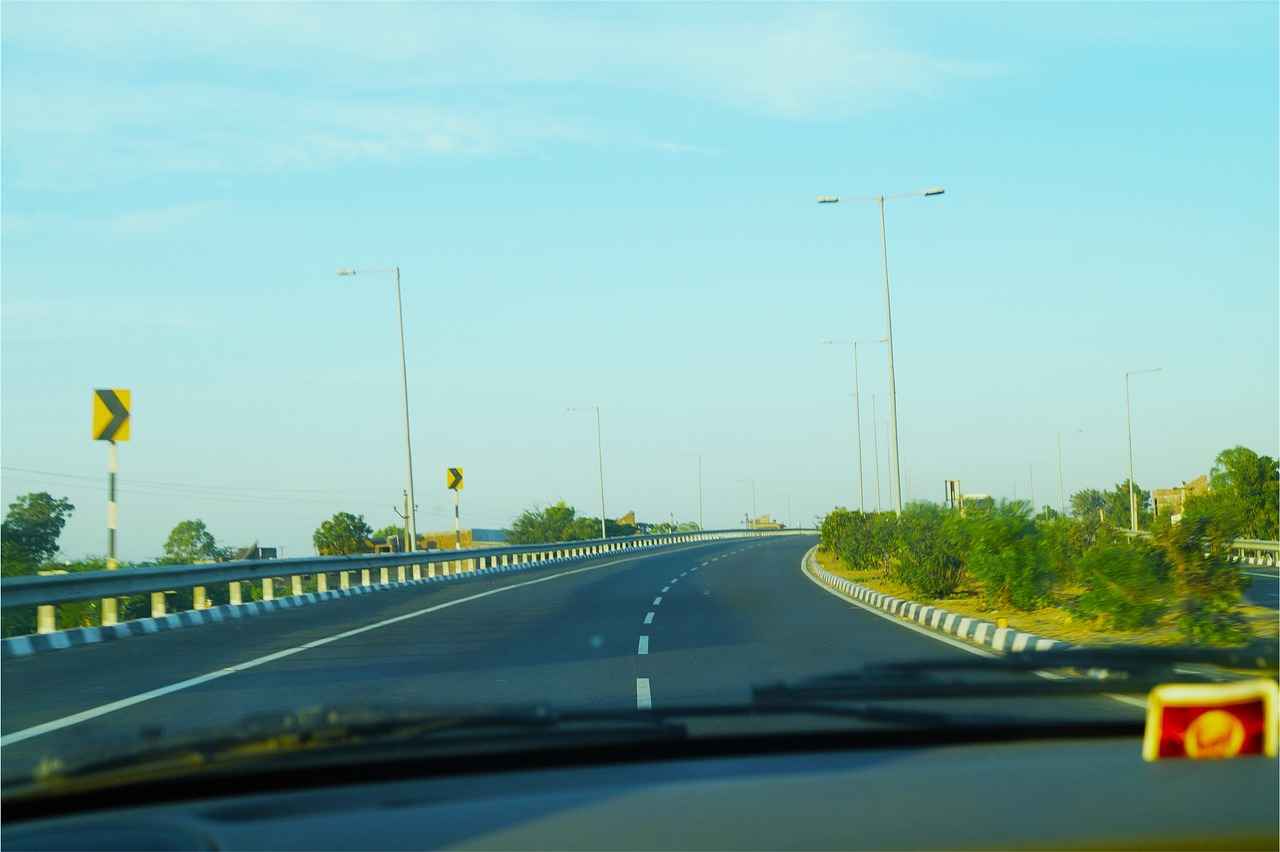
What Tools Do You Need for Installing Windshield Wipers?
When it comes to maintaining your vehicle, one of the most crucial tasks is ensuring that your windshield wipers are in optimal working condition. Windshield wipers play a vital role in providing clear visibility during rain, snow, and other adverse weather conditions. Before you embark on the installation process of new windshield wipers, it is essential to gather all the necessary tools. This preparation not only guarantees a smoother experience but also helps you avoid unnecessary delays and frustrations.
Before starting the installation process, it’s important to gather the right tools. Having the proper equipment on hand can save you valuable time and effort. Here’s a comprehensive list of tools you might need:
- Flathead Screwdriver: This tool is often required to remove the old wiper blades from the wiper arms.
- Socket Wrench: Depending on the type of wiper arm your vehicle has, you may need a socket wrench to loosen or tighten bolts.
- New Wiper Blades: Ensure you have the correct size and type of wiper blades that match your vehicle.
- Cleaning Cloth: A microfiber cloth can be useful for cleaning the windshield and ensuring a proper fit.
Each tool serves a specific purpose in the installation process:
- Flathead Screwdriver: This is essential for prying off the old wiper blades without damaging the wiper arm.
- Socket Wrench: If your wiper arms are secured with bolts, a socket wrench will allow you to easily remove and install them.
- New Wiper Blades: Using the correct wipers ensures that they fit properly and function effectively, enhancing your visibility.
- Cleaning Cloth: Keeping the windshield clean is crucial for the new wipers to make full contact with the glass, reducing streaks and improving performance.
Once you have gathered all the necessary tools, it’s time to prepare for the installation:
1. Park your vehicle on a level surface.2. Turn off the ignition and ensure the wipers are in the "off" position.3. Lift the wiper arms away from the windshield for easy access.
By taking these preliminary steps, you set the stage for a successful installation. Remember, proper preparation can make all the difference in ensuring that your new windshield wipers are installed correctly and function effectively.
In summary, gathering the right tools is a critical step in the windshield wiper installation process. Not only does it streamline the task, but it also enhances your overall experience. By ensuring you have all necessary equipment ready, you can focus on the installation itself, leading to better results and improved visibility on the road.
Essential Tools for Windshield Wiper Installation
When it comes to maintaining your vehicle, one of the most essential tasks is ensuring that your windshield wipers are in optimal condition. This not only enhances your visibility during adverse weather but also contributes to overall driving safety. Before diving into the installation process of new windshield wipers, it’s crucial to gather the right tools. Having the appropriate equipment on hand can significantly streamline the installation process.
To successfully install windshield wipers, you will need a few basic tools. These tools will not only make the process easier but also help prevent any potential damage to your vehicle’s wiper system. Here’s a list of essential tools you should have ready:
- Flathead Screwdriver: This tool is often necessary for loosening or tightening screws that secure the wiper arm.
- Socket Wrench: Depending on the type of wiper arm your vehicle has, a socket wrench may be required to remove the arm itself. Ensure you have the correct socket size to avoid stripping the bolts.
- New Wiper Blades: Always ensure you have the right size and type of wiper blades for your specific vehicle model.
- Cleaning Cloth: A microfiber cloth can be useful for cleaning the windshield and wiper arm before installation.
Using the right tools is vital for a successful installation. Not only does it make the process smoother, but it also helps in avoiding damage to the wiper arms or the windshield. For instance, using a flathead screwdriver that is too large can strip the screws, making future replacements more difficult.
Before you start the installation, take a moment to prepare your workspace. Here are some steps to follow:
- Park Your Vehicle: Ensure your vehicle is parked on a flat surface and the engine is turned off to avoid any accidental activation of the wipers.
- Gather Your Tools: Lay out all your tools within easy reach to avoid unnecessary movement during the installation process.
- Consult Your Vehicle’s Manual: Refer to your vehicle’s manual for specific instructions related to your model, including the type of wiper arm and blade you will be working with.
While installing windshield wipers may seem straightforward, there are common pitfalls to be aware of:
- Not Checking Compatibility: Always double-check that the new wiper blades are compatible with your vehicle model.
- Forgetting to Clean: Failing to clean the wiper arms and windshield can lead to poor performance and premature wear of the new blades.
- Over-tightening Screws: Be cautious not to over-tighten screws, as this can damage the wiper arm or the mounting points.
By ensuring you have the right tools and following these guidelines, you can confidently install your new windshield wipers, enhancing your vehicle’s safety and performance. Remember, regular maintenance of your wipers is key to ensuring clear visibility on the road.
Choosing the Right Windshield Wipers for Your Vehicle
When it comes to maintaining your vehicle, one of the most overlooked components is the windshield wipers. Choosing the right windshield wipers is essential for ensuring clear visibility during rain or snow, which is crucial for your safety on the road. This guide will help you navigate the process of selecting the appropriate size and type of windshield wipers for your vehicle.
The size of your windshield wipers directly impacts their effectiveness. Wipers that are too short may not cover the entire windshield, leaving blind spots, while those that are too long can cause damage to the windshield or the wiper mechanism. To avoid these issues, it is vital to refer to your vehicle’s manual, which typically lists the correct sizes for both the driver and passenger sides.
- Conventional Wipers: These are the traditional type of wipers that feature a metal frame. They are generally less expensive but may not perform as well in extreme weather conditions.
- Beam Wipers: These wipers have a sleek, aerodynamic design that hugs the windshield better, providing superior contact and improving performance in heavy rain or snow.
- Hybrid Wipers: Combining features of both conventional and beam wipers, these offer the best of both worlds. They provide the strength of a metal frame with the performance benefits of a beam design.
To find the right size for your windshield wipers, you can:
- Check your vehicle’s owner manual for specifications.
- Visit a local auto parts store where staff can assist you in finding the correct size.
- Use online tools or apps that allow you to input your vehicle’s make, model, and year to find the right wipers.
Aside from size and type, consider the following factors:
- Weather Conditions: If you live in an area that experiences heavy rain or snow, investing in high-quality beam or hybrid wipers can significantly improve visibility.
- Frequency of Use: If you use your wipers frequently, opt for durable materials that can withstand wear and tear.
- Installation Ease: Some wipers come with easy installation features, making them more user-friendly for those who prefer to change them on their own.
You can purchase windshield wipers from a variety of sources:
- Auto Parts Stores: These stores often have knowledgeable staff who can help you find the right wipers for your vehicle.
- Online Retailers: Websites like Amazon or specialized auto parts sites allow you to compare prices and read customer reviews.
- Dealerships: While generally more expensive, dealerships guarantee OEM (Original Equipment Manufacturer) parts that are specifically designed for your vehicle.
In summary, selecting the right windshield wipers is not just about picking any available option but requires careful consideration of size, type, and compatibility with your vehicle. By following the guidelines outlined above, you can ensure that your windshield wipers provide optimal performance, enhancing your visibility and safety on the road.

How to Remove Old Windshield Wipers
When it comes to maintaining your vehicle’s visibility and safety, removing old windshield wipers is an essential task that should not be overlooked. This article delves into the process of removing windshield wipers, ensuring you can install new ones with ease and confidence.
Before diving into the removal process, it’s crucial to understand why handling this task with care is vital. Old windshield wipers can become brittle and ineffective over time, leading to reduced visibility during rain or snow. Proper removal not only prevents damage to the wiper arms but also ensures that the new wipers can be installed without any complications.
Gathering the right tools makes the removal process smoother. Here’s a list of essential tools:
- Flathead screwdriver – Useful for prying off stubborn blades.
- Socket wrench – Depending on your vehicle, this may be necessary for certain wiper arm types.
- Soft cloth – To protect your windshield from scratches during the process.
Follow these steps to ensure a safe and effective removal of your old windshield wipers:
- Lift the Wiper Arm: Gently pull the wiper arm away from the windshield until it is perpendicular to the glass.
- Locate the Release Tab: Each wiper blade has a release tab that secures it to the wiper arm. Identify this tab before proceeding.
- Press the Release Tab: With one hand, press the release tab while using your other hand to slide the wiper blade off the arm. This method minimizes the risk of damaging the wiper arm.
- Repeat for the Other Wiper: Follow the same steps for the second wiper blade.
While removing windshield wipers may seem straightforward, there are common pitfalls to avoid:
- Excessive Force: Avoid pulling too hard on the wiper arm or blade, as this can lead to damage.
- Neglecting to Secure the Arm: Ensure that the wiper arm is stable before attempting to remove the blade to prevent it from snapping back.
- Ignoring the Manual: Always refer to your vehicle’s manual for specific instructions related to your make and model.
Once the old wipers are removed, it’s time to prepare for the installation of new ones. Make sure to clean the windshield thoroughly to ensure optimal performance of the new wipers. A clean surface will provide better contact and enhance visibility.
Regularly checking and replacing your windshield wipers is a simple yet significant part of vehicle maintenance. By understanding how to properly remove old wipers, you set the stage for a successful installation of new ones, ensuring that you maintain clear visibility in all weather conditions. Remember, safety begins with the small details, and functioning windshield wipers are one of those details that can make a big difference.
Steps to Safely Remove Windshield Wipers
When it comes to maintaining your vehicle, one of the key components to ensure safety and visibility is the windshield wipers. Regularly replacing old wipers is essential, and knowing how to safely remove them is the first step in this process. Below, we outline the to help you perform this task effectively.
Removing windshield wipers improperly can lead to damage to the wiper arm or even the windshield itself. Understanding the correct method ensures that you can replace your wipers without causing unnecessary harm to your vehicle. This not only saves you money on repairs but also extends the life of your new wipers.
Before you begin the removal process, gather the following tools:
- Flathead screwdriver – helpful for prying off stubborn blades.
- Socket wrench – may be necessary for certain vehicle models.
- Soft cloth – to protect your windshield from scratches.
1. **Lift the Wiper Arm**: Start by gently lifting the wiper arm away from the windshield. This should be done with care to avoid bending the arm.2. **Locate the Release Tab**: Most wiper blades have a release tab or button. This is typically found near the base of the wiper blade where it connects to the arm.3. **Press the Release Tab**: Firmly press the release tab while holding the wiper arm in an upright position. This action will unlock the blade from the arm.4. **Slide the Wiper Blade Off**: While continuing to hold the release tab, gently slide the wiper blade downwards to remove it from the wiper arm. Ensure that you are not pulling too hard, as this could damage the arm.5. **Repeat for the Other Wiper**: Follow the same steps for the other wiper blade, ensuring that both are removed safely.
There are several common pitfalls that you should be aware of when removing windshield wipers:
- Forcing the Blade Off: Avoid using excessive force, as this can damage the wiper arm or the blade itself.
- Neglecting to Secure the Arm: Ensure that the wiper arm is held securely before attempting to remove the blade to prevent it from snapping back.
- Ignoring the Release Mechanism: Always check for the release tab; trying to pull the blade off without releasing it can cause damage.
Once you have successfully removed the old wipers, inspect the wiper arms for any signs of wear or damage. If they appear to be in good condition, you can proceed to install the new wipers. If you notice any issues, consider consulting a professional for advice on replacement.
By following these steps and avoiding common mistakes, you can ensure a smooth removal process for your windshield wipers. This will set the stage for a successful installation of new wipers, enhancing your vehicle’s performance and safety.
Common Mistakes to Avoid When Removing Wipers
When it comes to maintaining your vehicle, proper windshield wiper maintenance is often overlooked. One of the most crucial steps in this process is the removal of old wipers before installing new ones. However, many car owners make mistakes during this seemingly simple task. Below, we outline some of the common mistakes to avoid when removing windshield wipers to ensure you do not damage your wiper arms or blades.
Understanding the importance of correct wiper removal can save you from costly repairs and ensure your new wipers function effectively. Damaging the wiper arm can lead to inefficient windshield clearing and potentially compromise your safety on the road.
Avoid pulling too hard on the wiper arm or blade, as this can cause significant damage. The wiper arm is designed to pivot and flex, and excessive force can bend or break it. Instead, gently lift the arm away from the windshield, ensuring it is in a stable position before proceeding with the removal of the blade.
Before attempting to remove the blade, ensure that the wiper arm is secured. A loose arm can snap back against the windshield, causing scratches or cracks. Make sure the arm is held in a stable position while you work on the blade. Using a towel or cloth to cushion the wiper arm can prevent damage in case it slips.
Many wiper blades come with a release tab or mechanism that must be pressed to remove the blade. Neglecting to check for these features can lead to unnecessary force being applied, which may damage both the wiper arm and the blade. Always familiarize yourself with the specific design of your wipers before attempting removal.
Using inappropriate tools can make the removal process more difficult and increase the risk of damage. Always use a flathead screwdriver or other recommended tools for your vehicle’s wiper type. This ensures that you can safely and effectively remove the wiper blades without causing injury to yourself or damage to your car.
Finally, rushing the removal process can lead to mistakes. Take your time to follow the correct steps, and double-check that you are performing each action correctly. Patience is key to avoiding mishaps that could lead to costly repairs or unsafe driving conditions.
By being aware of these common mistakes, you can ensure a smooth and safe removal of your windshield wipers. This not only protects your vehicle but also sets the stage for a successful installation of new wipers, enhancing your visibility and safety on the road.

How to Install New Windshield Wipers
Installing new windshield wipers is a simple procedure that can be completed in just a few minutes. Following the correct steps will ensure they function effectively and provide optimal visibility while driving. In this guide, we will walk you through the essential steps to install new windshield wipers, ensuring that your vehicle is ready for any weather conditions.
Windshield wipers play a critical role in maintaining visibility during rain, snow, or fog. Over time, wiper blades can wear out, leading to streaks and reduced effectiveness. Regularly replacing your wipers not only enhances your safety but also ensures that you can see clearly in adverse weather conditions. It’s an essential part of vehicle maintenance.
Before you start the installation process, it’s important to gather the necessary tools. This will help you avoid interruptions and make the process smoother.
- Flathead screwdriver – for adjusting the wiper arm if needed
- Socket wrench – may be required depending on your vehicle’s wiper arm type
- New windshield wiper blades – ensure they are the correct size for your vehicle
Removing old windshield wipers is a straightforward process that requires caution to avoid damaging the wiper arm.
1. Lift the wiper arm away from the windshield.2. Press the release tab on the wiper blade.3. Slide the wiper blade off the arm.
This method minimizes the risk of damaging the wiper arm, ensuring a smooth transition to the new blades.
Now that the old wipers are removed, you can proceed to install the new ones. Follow these steps for a successful installation.
1. Align the new wiper blade with the wiper arm.2. Slide the blade into place until you hear a click, indicating a secure fit.3. Gently lower the wiper arm back onto the windshield.
Make sure the blades are securely attached to prevent them from coming loose while driving.
After installation, it’s essential to test the wipers to ensure they function correctly. Here’s how to do it:
- Turn on your vehicle’s wiper system.
- Check for smooth operation and proper contact with the windshield.
- Observe for any unusual noises or skipping.
If everything appears to be functioning well, you are ready to hit the road with confidence.
To ensure a successful installation, be aware of these common mistakes:
- Not checking the size: Always confirm that the new wipers are the correct size for your vehicle.
- Forgetting to test: Always test the wipers after installation to ensure they work properly.
- Improper alignment: Ensure the wipers are aligned correctly to avoid uneven wiping.
By avoiding these pitfalls, you can ensure your new windshield wipers will perform effectively and keep your vision clear.
Step-by-Step Guide to Installing Windshield Wipers
Installing new windshield wipers is a crucial maintenance task that every vehicle owner should be familiar with. Properly functioning wipers are essential for maintaining visibility during rain, snow, or any adverse weather conditions. This step-by-step guide will walk you through the installation process, ensuring that you can do it quickly and effectively.
To begin the installation, first ensure that you have the new windshield wipers that are compatible with your vehicle. You can find this information in your car’s manual or by consulting a parts store. Once you have the correct wipers, follow these steps:
- Lift the wiper arm away from the windshield, making sure it is in a vertical position.
- This will give you better access to the attachment point for the new wiper blade.
Next, take the new wiper blade and align it with the wiper arm. It’s important to ensure that the blade is oriented correctly, as this will affect its performance. Look for the small notch or hook on the wiper arm that will accommodate the blade.
Carefully slide the wiper blade onto the wiper arm. You should feel some resistance as it moves into position. Continue to push until you hear a click, which indicates that the blade is securely attached. This sound is crucial, as it confirms that the wiper blade is locked in place and will operate effectively.
- Once the new blade is securely attached, gently lower the wiper arm back onto the windshield.
- Be cautious not to let the arm snap back down, as this can cause damage to both the arm and the windshield.
If your vehicle has two wipers, repeat the above steps for the second wiper blade. It’s generally advisable to replace both blades at the same time to ensure even performance.
After installing the new wipers, it’s essential to test them to ensure they are functioning correctly. Start your vehicle and activate the wiper system. Observe the wipers as they move across the windshield:
- Check for smooth operation without any skipping or chattering.
- Ensure that the wipers make full contact with the windshield, clearing away any water or debris.
Proper installation of windshield wipers is key to maintaining safety on the road. By following this step-by-step guide, you can ensure that your wipers are installed correctly and ready to perform when you need them most.
Testing Your New Windshield Wipers
After successfully installing your new windshield wipers, the next crucial step is to test their functionality. This process is essential to ensure that the wipers operate smoothly and maintain proper contact with the windshield, which is vital for clear visibility while driving.
Testing your windshield wipers after installation is not just a formality; it is a critical step to confirm that the wipers are functioning as intended. Properly functioning wipers are essential for maintaining visibility during rain or snow, and they help prevent accidents caused by impaired sight. If the wipers do not operate correctly, it could lead to streaks on the windshield or, worse, complete failure during a downpour.
- Turn on the Ignition: Start your vehicle to power the wiper system.
- Activate the Wiper System: Use the wiper control lever or switch to turn the wipers on. Begin with the low-speed setting.
- Observe the Wipers: Watch how the wipers move across the windshield. They should operate smoothly without any jerking or skipping.
- Check for Streaking: As the wipers move, look for any streaks left on the glass. If streaks are present, the wiper blades may not be making proper contact.
- Test High-Speed Setting: Switch to the high-speed setting to ensure that the wipers can handle increased speeds without faltering.
- Inspect the Wiper Blade Position: Ensure that the wiper blades return to their resting position correctly. They should sit flat against the windshield when off.
If you notice any issues during testing, such as skipping, streaking, or failure to return to the correct position, consider the following troubleshooting steps:
- Check the Installation: Ensure that the wiper blades are securely attached to the wiper arms. If they are loose, remove and reinstall them.
- Inspect the Wiper Blades: Examine the rubber edges of the blades for any signs of wear or damage. If they appear cracked or worn, it may be time to replace them.
- Examine the Wiper Arms: Look for any bends or misalignments in the wiper arms that could affect performance. Adjust or replace as necessary.
- Consult the Manual: Refer to your vehicle’s manual for specific troubleshooting tips related to your model’s wiper system.
Testing your new windshield wipers is a straightforward yet vital process that ensures your safety on the road. By following the steps outlined above, you can confirm that your wipers are ready to perform effectively when needed. Regular maintenance and timely testing can significantly enhance your driving experience, especially during adverse weather conditions.
Frequently Asked Questions
- How often should I replace my windshield wipers?
It’s generally recommended to replace your windshield wipers every 6 to 12 months, depending on usage and weather conditions. If you notice streaking or skipping while wiping, it’s time for a change!
- Can I install windshield wipers myself?
Absolutely! Installing windshield wipers is a DIY task that most people can handle. Just follow the step-by-step guide, and you’ll have them on in no time. It’s easier than making a sandwich!
- What if my new wipers don’t fit?
If your new wipers don’t fit, double-check the size and type recommended for your vehicle. Sometimes, a quick trip back to the store or a look at your manual can save the day!
- Why are my windshield wipers making noise?
Noisy wipers can be a sign of wear or improper installation. Make sure they’re securely attached and check for any debris on the windshield. If the noise persists, it might be time for a new set!
- Do I need any special tools to install windshield wipers?
Most installations only require basic tools like a flathead screwdriver. Having the right tools handy makes the process smoother and quicker, just like a well-oiled machine!
